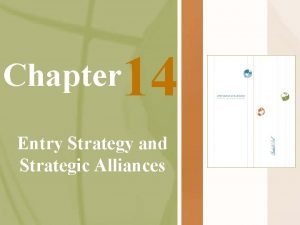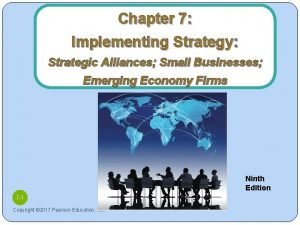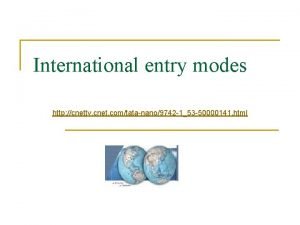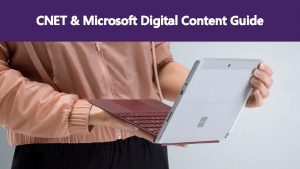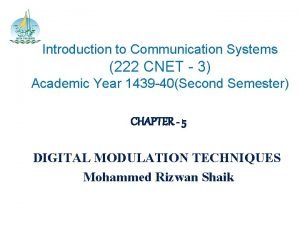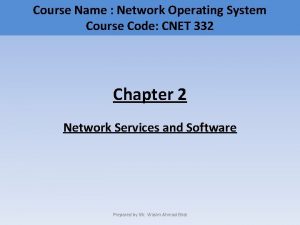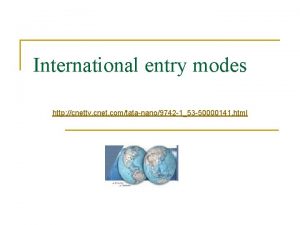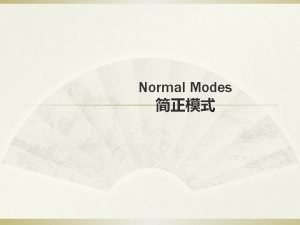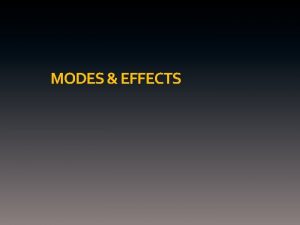International entry modes http cnettv cnet comtatanano9742 153








- Slides: 8

International entry modes http: //cnettv. cnet. com/tata-nano/9742 -1_53 -50000141. html

EXPORTING n n - number and type of intermediaries, functions performed – fullservice high specialization (clearing goods) PARTNER MINDSHARE (= measurement of the strength of a relationship - effort, involvement, sales performance… - drivers: (1) commitment and trust; (2) collaboration; (3) mutuality of interest and common purpose + product, brand profit 3 major types: a) indirect export – another domestic company – export house, trading company… performs exporting activities b) direct export – company performs exporting activities (majority of or all) itself c)cooperative export – collaborative agreements with other organizations – some exp. activities

Indirect export modes n n Limited international expansion objectives Minimal resources Gradual market entry Test of market n n n Little or no control over the way the product is marketed No contact Little or no information 1. Export buying agent (export commission house) – the overseas customer's hired purchasing agent operating on basis of orders received from the customer/buyer – scan domestic market 2. Broker – to bring a buyer and seller together; performs a contractual function; does not actually handle the products sold or bought; the broker is paid a commission (cca 5%); commodity specialist 3. Export management company (export house) – „export department“ for a range of companies; conduct business in the name of each manufacturer it represents; knowledge of the market!!!; specialization by geographical area, product or customer type; paid a commission; 4. - competitive products, interest in high profitable products, lower specialization… 5. 4. Trading company – colonial times, Africa and East Asia, in Japan over 50% of whole export; barter – or counter trade, financing 6. 5. Piggyback – non-competitive but related and complementary products;

Direct export modes Manufacturer sells directly to the importer located in the foreign market n n n DISTRIBUTOR independent company that stocks the manufacturer's product It has freedom o choose own customer and price Profit from the differences between seller and buyer price Exclusive representatives = sole distributors in a country Buy on their own accounts Usually represents the manufacturer in all aspect of sales and servicing n n n n AGENT Independent company that sells on behalf of the manufacturer Usually it will not see or stock the product Exclusive, semi-exclusive, nonexclusive Commission on a pre-agreed basis Sells to wholesalers and retailers Some furnish market and financial information

Cooperative export - export marketing groups n Functions: - exporting in the name of the association - consolidating freight, negotiating rates and chartering ships - performing market research - appointing selling agents abroad - obtaining credit information and collecting debts - setting prices for export - allowing uniform contracts and terms of sale - allowing cooperative bids and sales negotiation n Usually SMEs – more effective

INTERMEDIATE ENTRY MODES n = transfer of skills and knowledge (1) Contract manufacturing – outsourced to an external partner specialized in production and production technology – lower risk, lower costs, appropriate foreign market demand; better interaction with local market, high level of control; high flexibility; product could be exported (2) Licensing – patent covering a product or process, know-how, technical/marketing advice and assistance, use of trade mark/name – concentration on core competences - R&D, lower expertise for overseas, the end of the PLC in home country, government regulations restrict foreign direct investment… (3) Franchising – product and trade name, business format package (trade mark/name, copyright, design, patent, trade secret, business and management know-how, geographic exclusivity, market research for the area…) (4) Strategic alliances/joint ventures – new opportunities, speed up market entry, lower costs compared to solely business; up-stream collaboration – on R&D and/or production; down-stream – marketing, distribution, sales, service - = Y coalition; both streams – X coalition

n n n n Seeking for resources: Development know-how Sales and service expertise Low-cost production facilities Strategically critical manufacturing capabilities Reputation and brand equity Market access and knowledge Financial resources… ? Who is the leading company? ? Double. . management? ? Repatriation of profits? ? Shared equity? Mixing different cultures! Developing trust! Providing and exit strategy!

HIERARCHICAL ENTRY MODES n n (1) (2) (3) (4) (5) The firm completely owns and control foreign market entry mode Allocation of responsibility and competence between head office and subsidiaries Domestic-based sales representatives/manufacturer´s own sales force Resident sales representatives/sales subsidiary/sales branch Sales and production subsidiary Region centre Transnational organization(globally integrated)
